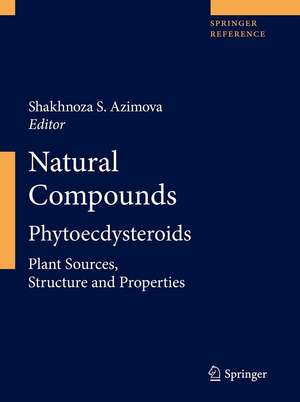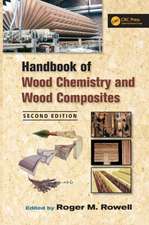Natural Compounds: Phytoecdysteroids
Editat de Shakhnoza S. Azimovaen Limba Engleză Hardback – 27 sep 2012
| Toate formatele și edițiile | Preț | Express |
|---|---|---|
| Hardback (4) | 2579.04 lei 38-44 zile | |
| Springer – 20 oct 2010 | 3414.33 lei 3-5 săpt. | |
| Springer – 27 sep 2012 | 2579.04 lei 38-44 zile | |
| Springer – 27 sep 2012 | 2610.97 lei 38-44 zile | |
| Springer – 27 sep 2012 | 2702.05 lei 38-44 zile |
Preț: 2579.04 lei
Preț vechi: 3393.47 lei
-24% Nou
Puncte Express: 3869
Preț estimativ în valută:
493.65€ • 536.40$ • 414.94£
493.65€ • 536.40$ • 414.94£
Carte tipărită la comandă
Livrare economică 17-23 aprilie
Preluare comenzi: 021 569.72.76
Specificații
ISBN-13: 9781461405429
ISBN-10: 1461405424
Pagini: 332
Ilustrații: XXI, 308 p. 356 illus.
Dimensiuni: 193 x 260 x 23 mm
Greutate: 0 kg
Ediția:2013
Editura: Springer
Colecția Springer
Locul publicării:New York, NY, United States
ISBN-10: 1461405424
Pagini: 332
Ilustrații: XXI, 308 p. 356 illus.
Dimensiuni: 193 x 260 x 23 mm
Greutate: 0 kg
Ediția:2013
Editura: Springer
Colecția Springer
Locul publicării:New York, NY, United States
Public țintă
ResearchCuprins
Phytoecdysteroids: chemistry and occurrence. Occurrence of Phytoecdysteroids in Plant Species.- Physic-Chemical and Biological Properties of Phytoecdysteroids.- Phytoecdysteroids and their conjugates.
Notă biografică
Shakhnoza S. Azimova, Yunusov Institute of Chemistry of Plant Substances, Tashkent, Uzbekistan.V.I. Vinogradova, Yunusov Institute of Chemistry of Plant Substances, Tashkent, Uzbekistan.
Textul de pe ultima copertă
'Natural Compounds: Plant Sources, Structure and Properties' details the properties of over 7,500 chemical compounds of pharmacological interest found in plants. Each volume systematically covers occurrence of the compounds in plants, illustrations of chemical structures plus physical-chemical, spectral, and pharmacological data. Entries are indexed by plant name, subject, and pharmacological property. This provides unique coverage of information on compounds isolated from some 3,000 plants, including many from central Asia and Russia, that are not well known elsewhere. The entries for each compound share a similar format. The entries are preceded by tabulated information on the occurrence of the compounds in plants etc. The highly experienced team of compilers from the renowned Institute of the Chemistry of Plant Substances in Tashkent have expertly assessed the international literature and include data only when confident of its validity, e.g. excluding data where measurement processes cause degradation of the original compound.
Caracteristici
Provides natural product chemists and pharmaceutical researchers important chemical data, with common and family names of the plants in which these active compounds naturally occur
Covers 7,500 compounds with illustrations of their chemical structures
Coverage of 3,000 plants - many lesser known from Central Asia and Russia
Each entry includes citations to peer-reviewed journal literature
Covers 7,500 compounds with illustrations of their chemical structures
Coverage of 3,000 plants - many lesser known from Central Asia and Russia
Each entry includes citations to peer-reviewed journal literature
Recenzii
From the reviews:
“This multivolume compendium features over 7,500 unique natural plant compounds … . Each volume is divided into two chapters; the first is organized alphabetically by plant family, subspecies, and their associated natural products, followed by references to their original discovery. The second chapter, alternatively organized by structural class, focuses on the physical, pharmacological, and spectroscopic properties of each compound. … Summing Up: Recommended. Researchers/faculty and professionals/practitioners.” (D. L. Jacobs, Choice, Vol. 51 (1), September, 2013)
“This multivolume compendium features over 7,500 unique natural plant compounds … . Each volume is divided into two chapters; the first is organized alphabetically by plant family, subspecies, and their associated natural products, followed by references to their original discovery. The second chapter, alternatively organized by structural class, focuses on the physical, pharmacological, and spectroscopic properties of each compound. … Summing Up: Recommended. Researchers/faculty and professionals/practitioners.” (D. L. Jacobs, Choice, Vol. 51 (1), September, 2013)







